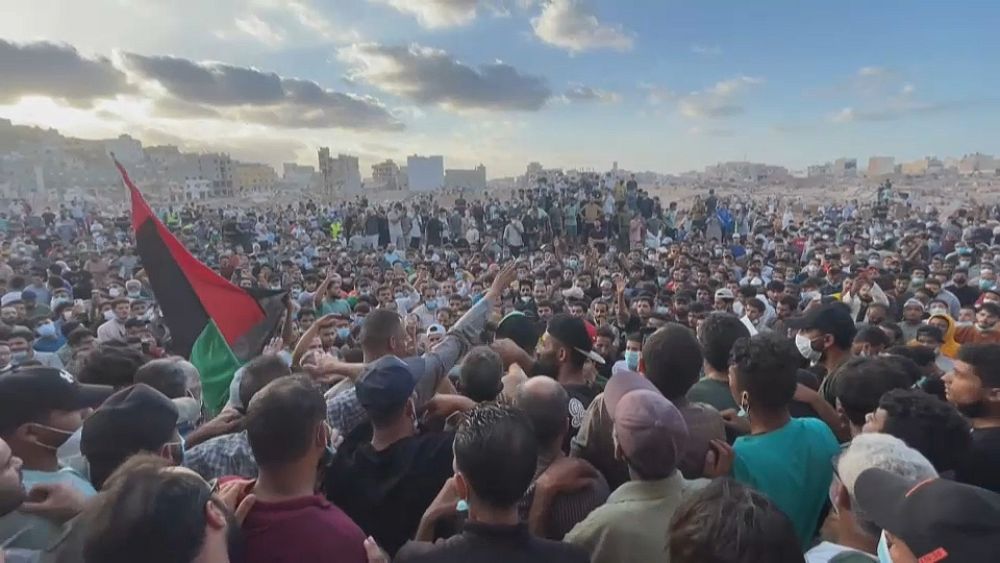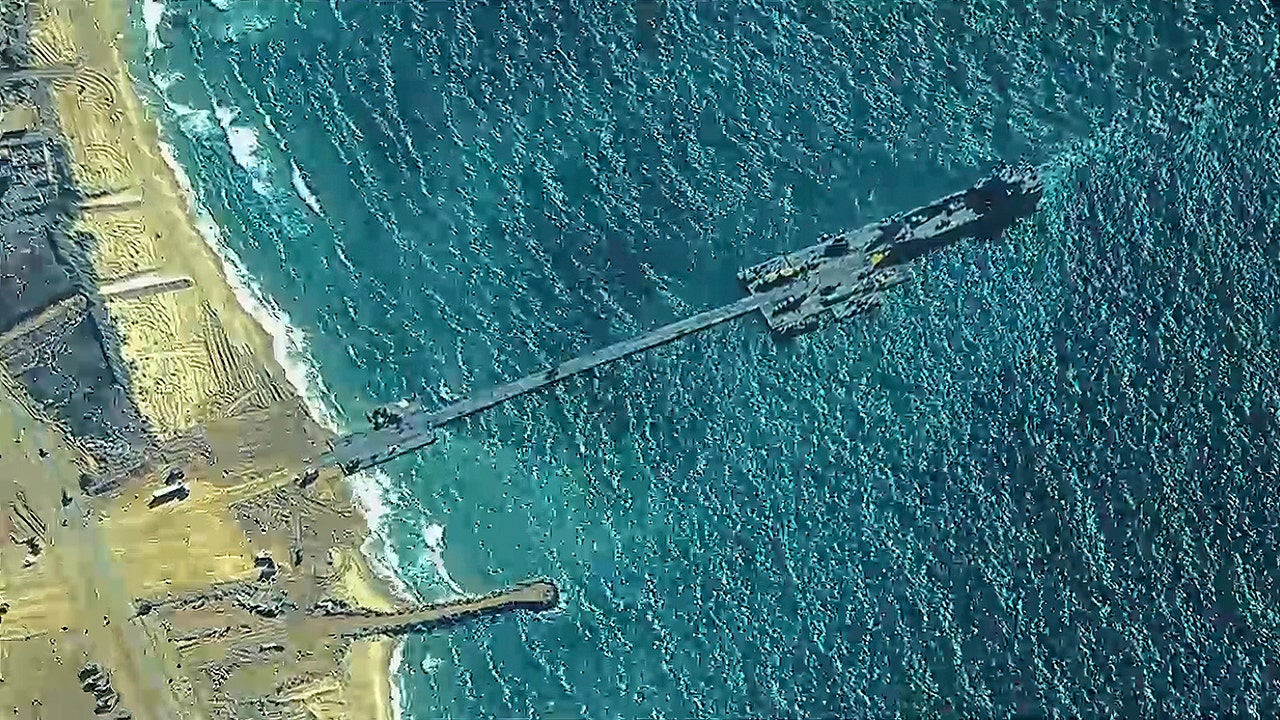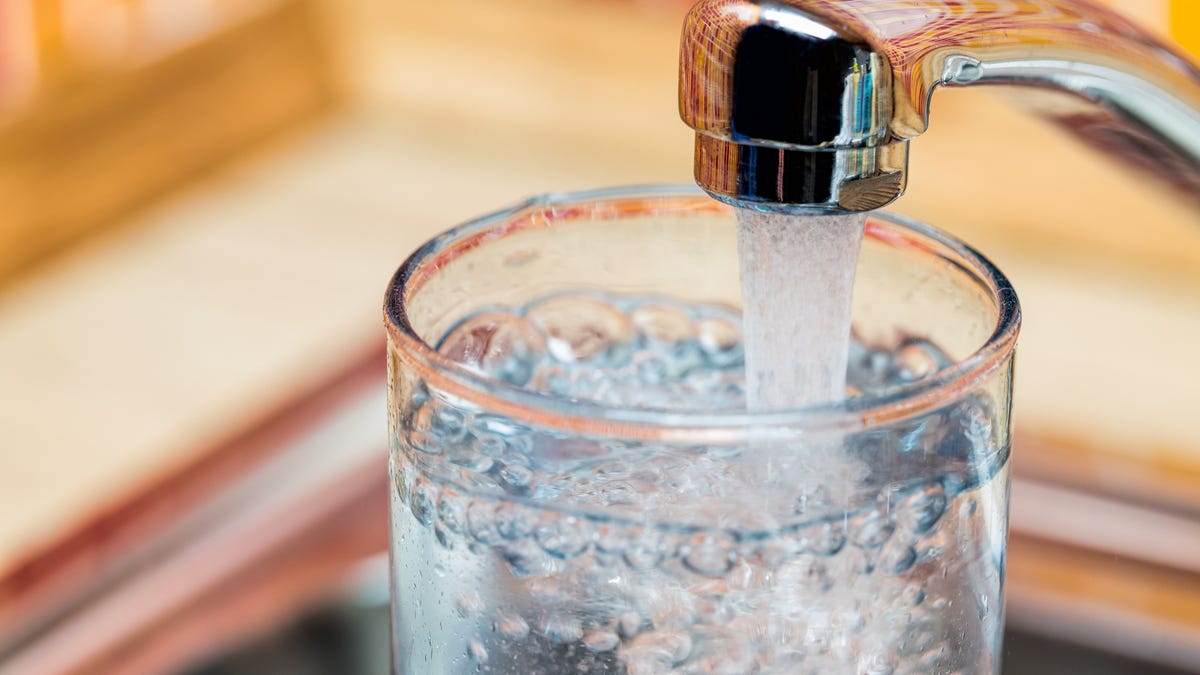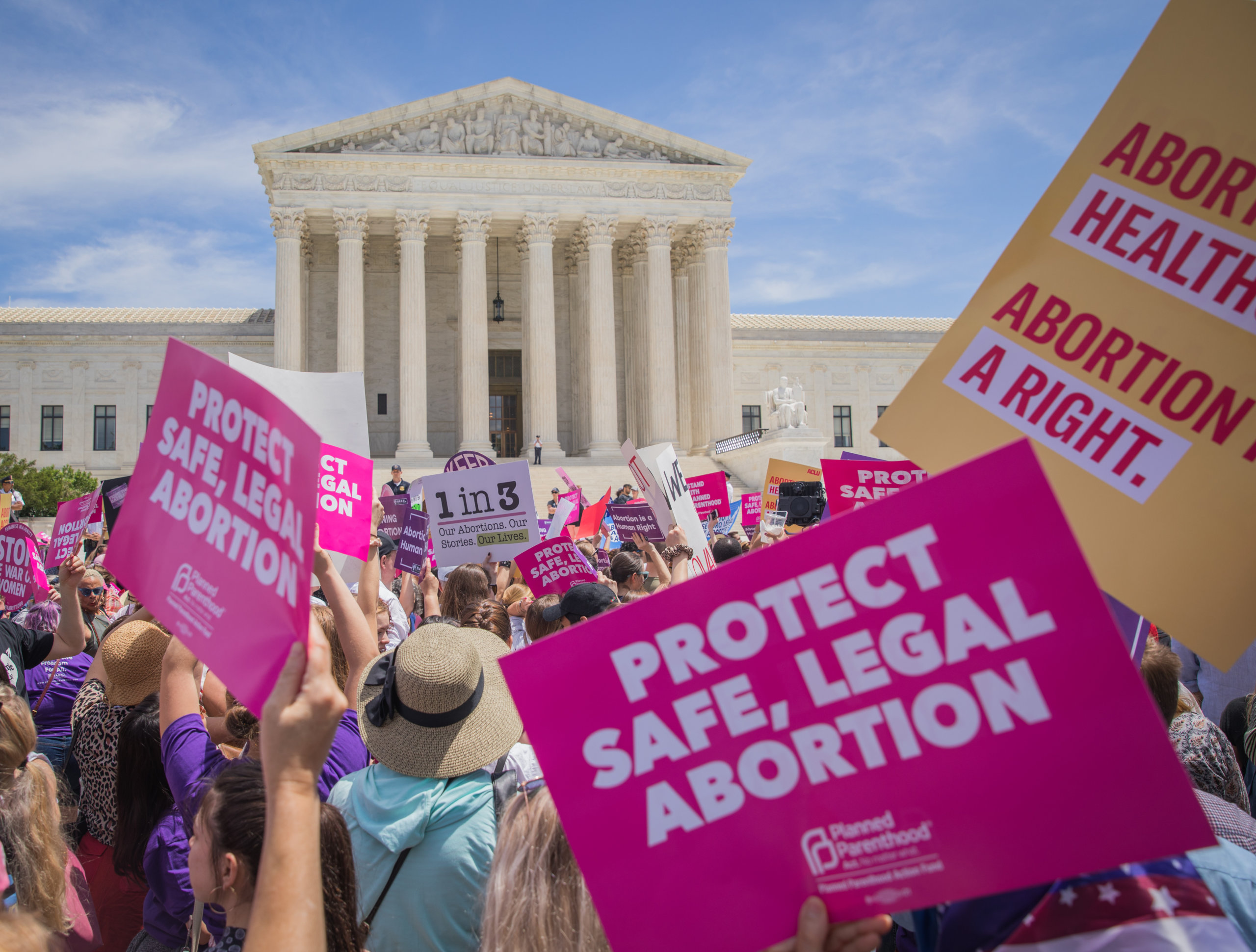World
Protesters in Derna accuse Libyan authorities of inaction after deadly

Protesters changing “Libya! Libya!” called on authorities to expedite their investigation into the disaster, for the UN to set up an office in Derna, for the urgent reconstruction of the city and for compensation for those affected by the flood.
Officials warned Monday that a disease outbreak in Libya’s northeast, where floods have killed thousands, could create “a second devastating crisis” as adults and children fell ill from contaminated water.
In a statement, the United Nations Support Mission in Libya said it was particularly concerned about water contamination and the lack of sanitation after two dams collapsed during Mediterranean storm Daniel, sending a wall of water gushing through the eastern city of Derna on Sept. 11. The death toll has varied, with government officials and aid agencies giving tallies ranging from about 4,000 to 11,000 dead.
Nine UN agencies responding to the disaster are working to prevent diseases from taking hold and creating another crisis in the devasted country, which is receiving 28 tons (25 metric tonnes) of medical supplies from the World Health Organization, the mission said.
Haider al-Saeih, head of Libya’s Center for Combating Diseases, said in televised comments Saturday that at least 150 people — 55 of them children — suffered diarrhoea after drinking contaminated water in Derna.
Unity in the face of disaster
The disaster has brought some rare unity to oil-rich Libya, which has been divided between rival administrations since 2014. Both are backed by international patrons and armed militias whose influence in the country has ballooned since a NATO-backed Arab Spring uprising toppled autocratic ruler Moammar Gadhafi in 2011.
The opposing governments have both deployed humanitarian teams to the port city and other affected areas, but poor coordination, difficulty getting aid to the hardest-hit areas and the destruction of Derna’s infrastructure, including several bridges, have hampered their efforts.
On Monday, protesters gathered outside the al-Shabana mosque in central Derna, in a show of anger against authorities.
Hundreds of Libyan men gathered outside, and atop, the mosque before a man read a list of demands at the building’s entrance. The man called on authorities to expedite their investigation into the disaster, for the UN to set up an office in Derna, for urgent reconstruction of the city and for compensation for those affected by the flood. After he finished, the hundreds gathered began chanting: “Libya, Libya, Libya.”
On Saturday, Libya’s general prosecutor, al-Sediq al-Sour, opened an investigation into the collapse of the two dams, built in the 1970s, as well as the allocation of maintenance funds. Derna’s mayor, Abdel-Moneim al-Gaithi, was suspended pending an investigation into the disaster.
Later Monday evening, the former mayor said his home was set on fire by protesters. He told the AP that neither he or any of his family members were hurt in the attack but gave no further information.
Additional $11 million in aid
The same evening, the White House said in a statement that the US would provide an additional $11 million of aid to local and international organizations responding to humanitarian needs.
The International Organization for Migration said Monday that about 40,000 people have been displaced across northeast Libya, including 30,000 in Derna. Residents from the nearby cities of Benghazi and Tobruk have offered to put up the displaced, while volunteers search for survivors buried beneath the rubble.
When the flood struck, Mraje Kdour and his three brothers managed to escape the second floor, but his sister didn’t make it.
“We got so close to the ceiling. We were barely able to breathe,” Kdour told The Associated Press
The health minister from Libya’s eastern government, Othman Abduljaleel, said Sunday that his ministry had begun a vaccination program “against diseases that usually occur after disasters such as this one” but didn’t elaborate.
Libya’s Red Crescent has said at least 11,300 people have been killed and an additional 10,000 are missing. After earlier reporting that same death toll, the UN Office for the Coordination of Humanitarian Affairs is now citing far lower numbers, with about 4,000 people killed and 9,000 missing.
Abduljaleel said at least 3,338 bodies had been identified and buried as of Monday night. He didn’t give a figure for how many bodies had been retrieved but previously tallied the figure at 2,000 Thursday.
Last week, Derna’s mayor said the toll could reach 20,000 dead.
Meanwhile, the floods have raised concerns about the ruins of Ceyrene, an ancient Greco-Roman city roughly 60 kilometres east of Derna that is one of five Libyan UNESCO World Heritage sites.
“UNESCO is in contact with archaeologists on the ground and its satellite imaging team is also trying to establish what the damage might be,” the agency said Monday in a statement sent to the AP.

World
Israel moves in on north Gaza Hamas stronghold, pounds Rafah without advancing

World
What to know about how much the aid from a US pier project will help Gaza

A U.S.-built pier is in place to bring humanitarian aid to Gaza by sea, but no one will know if the new route will work until a steady stream of deliveries begins reaching starving Palestinians.
The trucks that will roll off the pier project installed Thursday will face intensified fighting, Hamas threats to target any foreign forces and uncertainty about whether the Israeli military will ensure that aid convoys have access and safety from attack by Israeli forces.
TEMPORARY FLOATING PIER FOR GAZA AID COMPLETED, WILL MOVE INTO POSITION ONCE WEATHER LETS UP: PENTAGON
Even if the sea route performs as hoped, U.S, U.N. and aid officials caution, it will bring in a fraction of the aid that’s needed to the embattled enclave.
Here’s a look at what’s ahead for aid arriving by sea:
WILL THE SEA ROUTE END THE CRISIS IN GAZA?
No, not even if everything with the sea route works perfectly, American and international officials say.
The image provided by U.S, Central Command, shows U.S. Army soldiers assigned to the 7th Transportation Brigade (Expeditionary), U.S. Navy sailors assigned to Amphibious Construction Battalion 1, and Israel Defense Forces placing the Trident Pier on the coast of Gaza Strip on Thursday, May 16, 2024. The temporary pier is part of the Joint Logistics Over-the-Shore capability. The U.S. military finished installing the floating pier on Thursday, with officials poised to begin ferrying badly needed humanitarian aid into the enclave besieged over seven months of intense fighting in the Israel-Hamas war. (U.S. Central Command via AP)
U.S. military officials hope to start with about 90 truckloads of aid a day through the sea route, growing quickly to about 150 trucks a day.
Samantha Power, head of the U.S. Agency for International Development, and other aid officials have consistently said Gaza needs deliveries of more than 500 truckloads a day — the prewar average — to help a population struggling without adequate food or clean water during seven months of war between Israel and Hamas.
Israel has hindered deliveries of food, fuel and other supplies through land crossings since Hamas’ deadly attack on Israel launched the conflict in October. The restrictions on border crossings and fighting have brought on a growing humanitarian catastrophe for civilians.
International experts say all 2.3 million of Gaza’s people are experiencing acute levels of food insecurity, 1.1 million of them at “catastrophic” levels. Power and U.N. World Food Program Director Cindy McCain say north Gaza is in famine.
At that stage, saving the lives of children and others most affected requires steady treatment in clinical settings, making a cease-fire critical, USAID officials say.
At full operation, international officials have said, aid from the sea route is expected to reach a half-million people. That’s just over one-fifth of the population.
WHAT ARE THE CHALLENGES FOR THE SEA ROUTE NOW?
The U.S. plan is for the U.N. to take charge of the aid once it’s brought in. The U.N. World Food Program will then turn it over to aid groups for delivery.
U.N. officials have expressed concern about preserving their neutrality despite the involvement in the sea route by the Israeli military — one of the combatants in the conflict — and say they are negotiating that.
There are still questions on how aid groups will safely operate in Gaza to distribute food to those who need it most, said Sonali Korde, assistant to the administrator for USAID’s Bureau for Humanitarian Assistance, which is helping with logistics.
U.S. and international organizations including the U.S. government’s USAID and the Oxfam, Save the Children and International Rescue Committee nonprofits say Israeli officials haven’t meaningfully improved protections of aid workers since the military’s April 1 attack that killed seven aid workers with the World Central Kitchen organization.
Talks with the Israeli military “need to get to a place where humanitarian aid workers feel safe and secure and able to operate safely. And I don’t think we’re there yet,” Korde told reporters Thursday.
Meanwhile, fighting is surging in Gaza. It isn’t threatening the new shoreline aid distribution area, Pentagon officials say, but they have made it clear that security conditions could prompt a shutdown of the maritime route, even just temporarily.
The U.S. and Israel have developed a security plan for humanitarian groups coming to a “marshaling yard” next to the pier to pick up the aid, said U.S. Vice Admiral Brad Cooper, deputy commander of the U.S. military’s Central Command. USAID Response Director Dan Dieckhaus said aid groups would follow their own security procedures in distributing the supplies.
Meanwhile, Israeli forces have moved into the border crossing in the southern city of Rafah as part of their offensive, preventing aid from moving through, including fuel.
U.N. deputy spokesman Farhan Haq said that without fuel, delivery of all aid in Gaza can’t happen.
WHAT’S NEEDED?
U.S. President Joe Biden’s administration, the U.N. and aid groups have pressed Israel to allow more aid through land crossings, saying that’s the only way to ease the suffering of Gaza’s civilians. They’ve also urged Israel’s military to actively coordinate with aid groups to stop Israeli attacks on humanitarian workers.
“Getting aid to people in need into and across Gaza cannot and should not depend on a floating dock far from where needs are most acute,” U.N. deputy spokesman Farhan Haq told reporters Thursday.
“To stave off the horrors of famine, we must use the fastest and most obvious route to reach the people of Gaza — and for that, we need access by land now,” Haq said.
U.S. officials agree that the pier is only a partial solution at best, and say they are pressing Israel for more.
WHAT DOES ISRAEL SAY?
Israel says it places no limits on the entry of humanitarian aid and blames the U.N. for delays in distributing goods entering Gaza. The U.N. says ongoing fighting, Israeli fire and chaotic security conditions have hindered delivery.
Under pressure from the U.S., Israel has in recent weeks opened a pair of crossings to deliver aid into hard-hit northern Gaza. It said a series of Hamas attacks on the main crossing, Kerem Shalom, have disrupted the flow of goods.
World
Slovakian ministers blame media and opposition for attack on PM Fico

Slovakia’s interior minister refrained from specifying the motivation behind the attack on Prime Minister Robert Fico but pointed fingers at media outlets and the opposition, urging them to reflect on how they present information.
Slovakian authorities charged a man with attempted premeditated murder on Thursday after he shot Prime Minister Robert Fico five times in the central town of Handlova.
The assault left the longstanding leader in a serious but stable condition.
“The attempt on Fico’s life was politically motivated,” Slovakia’s Interior Minister Matuš Šutaj-Eštok said during a news conference on Fico’s shooting.
Eštok said the suspect, believed to be 71, was a “lone wolf” and did not belong to any political party but had previously taken part in anti-government protests.
The minister did not specify what the motivation was, but blamed media outlets and the opposition.
“It was information that you have recently presented. The way you presented them, on that I think each of you can reflect,” he said.
Slovakia’s President-elect Peter Pellegrini said he had only been allowed to speak with Fico for a few minutes “because his current condition really requires peace and quiet without any other external distractions.”
Pellegrini wished Fico “a great deal of strength in the struggle ahead of him because he is facing a very difficult period indeed.”
The president-elect called on political parties to suspend or scale back their campaigns for European elections, which will be held June 6-9.
The populist leader had been attending a political event in Handlova when the shooting took place, sending shockwaves through the central European country.
Fico has long been a divisive figure in Slovakia and beyond. His return to power last year on a pro-Russian, anti-American message led to even greater worries among fellow European Union and NATO members that he would abandon his country’s pro-Western course – particularly on Ukraine.
At the start of Russia’s invasion, Slovakia was one of Ukraine’s staunchest supporters. Fico halted arms deliveries to Ukraine when he returned to power, his fourth time serving as prime minister.
-

 Politics1 week ago
Politics1 week ago'You need to stop': Gov. Noem lashes out during heated interview over book anecdote about killing dog
-

 News1 week ago
News1 week agoMan, 75, confesses to killing wife in hospital because he couldn’t afford her care, court documents say
-

 Politics1 week ago
Politics1 week agoRFK Jr said a worm ate part of his brain and died in his head
-

 World1 week ago
World1 week agoPentagon chief confirms US pause on weapons shipment to Israel
-

 Politics1 week ago
Politics1 week agoHere's what GOP rebels want from Johnson amid threats to oust him from speakership
-

 World1 week ago
World1 week agoPro-Palestine protests: How some universities reached deals with students
-

 World1 week ago
World1 week agoConvicted MEP's expense claims must be published: EU court
-

 Politics1 week ago
Politics1 week agoCalifornia Gov Gavin Newsom roasted over video promoting state's ‘record’ tourism: ‘Smoke and mirrors’



















